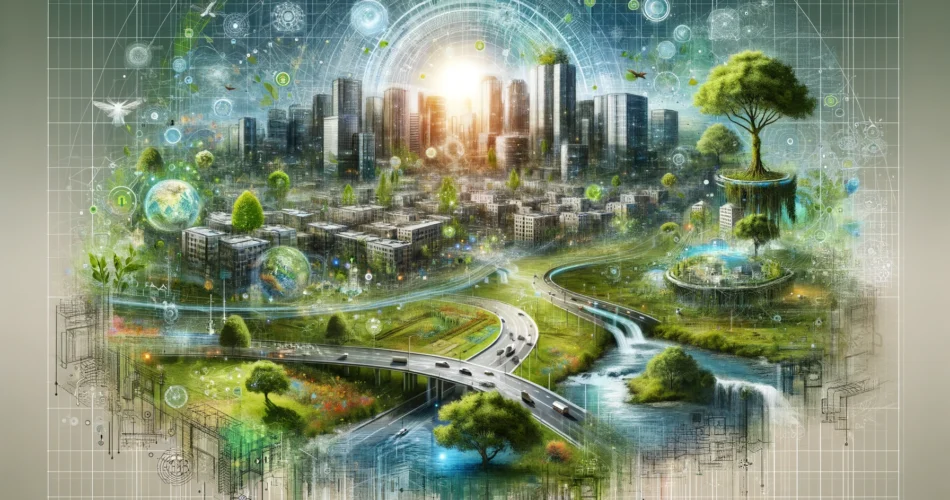Introduction
In the exploration of cities as living organisms, the application of complexity science offers a unique lens through which we can understand urban environments. By examining cities not just as static entities but as dynamic, evolving systems, we uncover patterns of change, interaction, and adaptation that mirror natural processes. This approach allows us to analyze urban areas using tools and concepts traditionally applied to the study of nature, leading to innovative insights into urban planning and development.
Cities and Complexity Science
Cities, with their intricate networks of social, economic, and physical infrastructures, epitomize complex systems. This complexity arises from the multitude of interactions between individuals, communities, and their environment, leading to emergent behaviors that cannot be easily predicted by examining individual components. By viewing cities through the lens of complexity science, we can begin to appreciate the adaptive, self-organizing properties that characterize urban systems and their evolution over time.
Urban Utopias and Their Evolution
Historical attempts at creating urban utopias, from Thomas More’s egalitarian society to Francis Bacon’s knowledge-based community, highlight the diverse visions of ideal urban living. These utopias, while often unrealized, provide valuable frameworks for thinking about how cities can be designed to foster community, knowledge exchange, and equitable access to resources. The transformation of these ideas into tangible urban plans, such as the layout of Palmanova or the social reforms in Mexico inspired by More’s Utopia, demonstrates the potential for utopian thinking to inform practical urban development.
Fractal Geometry in Urban Layouts
The application of fractal geometry to the study of cities reveals a universal pattern underlying the seemingly disparate forms of urban areas. This pattern, characterized by self-similarity and scale invariance, is evident in the layout of streets, the distribution of green spaces, and the hierarchical organization of neighborhoods. By understanding cities as fractal structures, we can better grasp the efficiency and resilience of their design, as well as the natural processes that influence their growth and form.
Percolation Theory and Urban Connectivity
Percolation theory, a concept borrowed from physics, provides a powerful tool for analyzing the connectivity and flow of information, people, and resources within cities. By modeling urban networks as percolation processes, we can identify critical thresholds for connectivity, understand the formation of urban clusters, and predict the impact of infrastructural changes on city-wide dynamics. This approach offers insights into how cities evolve in response to both planned developments and spontaneous patterns of growth.
Urban Systems and Hierarchical Organization
The hierarchical organization of urban systems, from individual neighborhoods to entire cities, mirrors the organization of natural systems, such as the branching patterns of trees or the neural networks of the brain. By studying cities in terms of their hierarchical structure, we can uncover the underlying principles that govern their functionality, resilience, and capacity for adaptation. This perspective also highlights the importance of considering multiple scales of analysis when addressing urban challenges, from local initiatives to regional planning.
Towards Resilient and Sustainable Urban Development
The insights gained from applying complexity science to the study of cities point toward the need for resilient and sustainable urban development. By drawing on principles from nature, such as diversity, modularity, and redundancy, we can design cities that are capable of withstanding shocks, adapting to change, and thriving in the face of uncertainty. This requires a multidisciplinary approach, bringing together expertise from urban planning, ecology, engineering, and social sciences to reimagine the future of urban living.
Conclusion
The application of complexity science to urban studies offers a rich and nuanced understanding of cities as dynamic, evolving systems. By embracing the complexity of urban environments, we can develop more resilient, sustainable, and equitable cities that respond to the needs of their inhabitants while harmonizing with the natural world. As we continue to explore the frontiers of complexity science, the potential for innovative urban solutions that embrace the principles of adaptation, diversity, and interconnectedness becomes increasingly evident.

